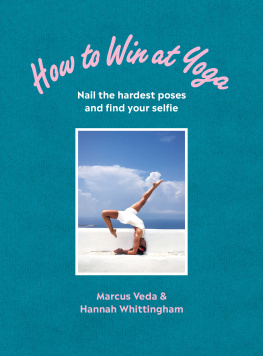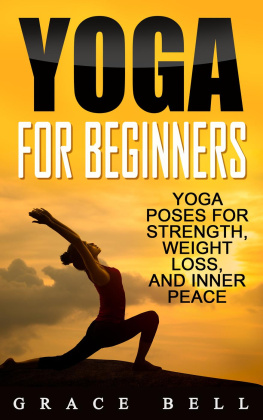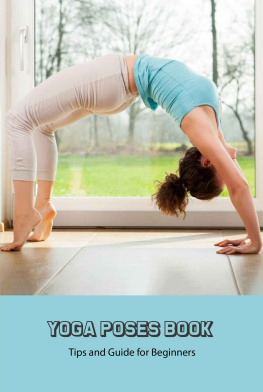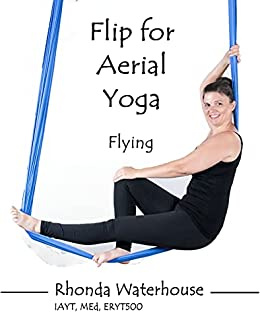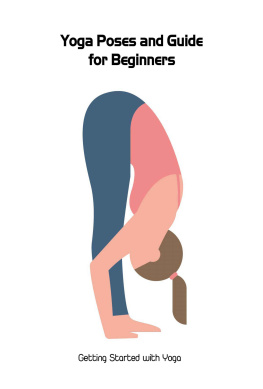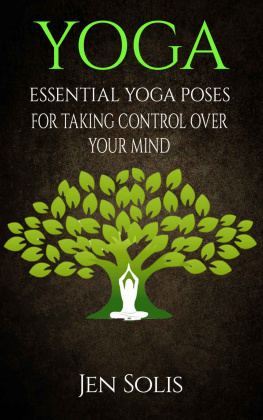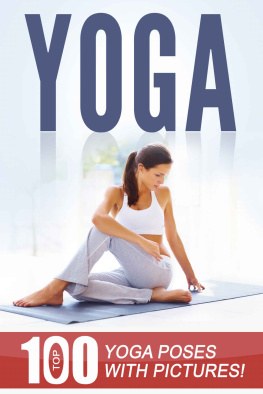

Nail the hardest poses
and find your selfie

FEATURING:
@daretomove @litasattva @emilymergyoga @alanellmanyoga @katarinarayburnyoga @natashacornishyoga @helenrussellclark @nickiratcliffe @davjonesyoga @hannahwhittinghamyoga @yogetoverit @cteagz @jonelleyoga @sylviasyoga @kimbalbumstead @tomberryart @plastic_horse @catfordshuffle @goodlordveda @anadiasyoga @naijaboybending @rachaldo @notordinaryjoe @juan.montoliu @leonrocketlondon_ @tomholmesembodied @isabellankesteryoga @model.family @szwerink @ambrasana

Marcus Veda &
Hannah Whittingham

ABOUT THE AUTHORS

MARCUS VEDA is a yoga teacher and DJ. He is renowned for breaking down difficult poses and pushing people to their edge with a good dose of fun.
HANNAH WHITTINGHAM is a yoga teacher, writer and magicians assistant who can be found strengthening limbs of yogis across London, or bending her own into magic boxes.
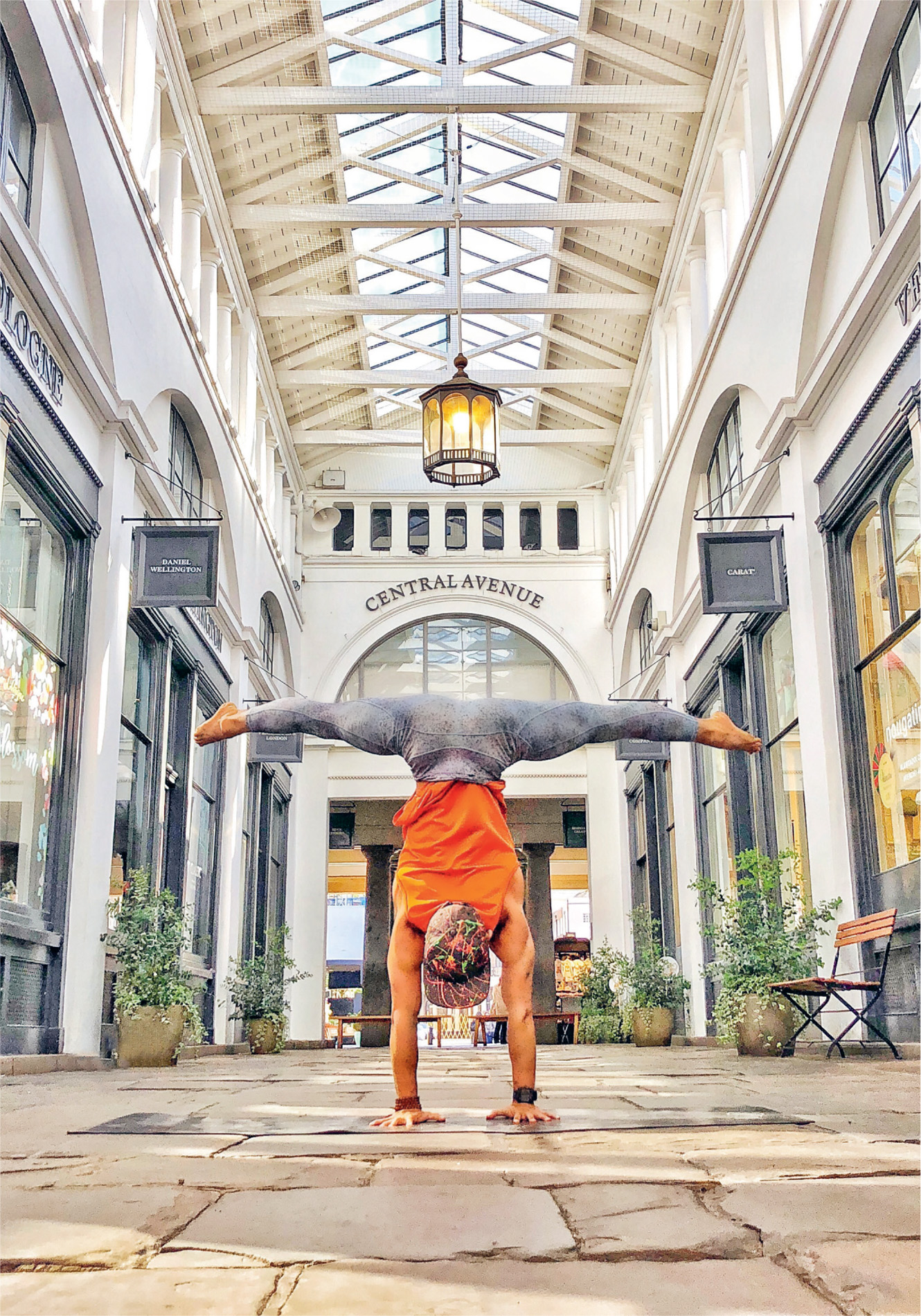
Contents
- 1: HANUMANASANA :
Full splits - 2: BAKASANA :
Crow pose - 3: ADHO MUKHA VRKSASANA :
Handstand - 4: ASHTAVAKRASANA :
Crazy 8 pose - 5: EKA PADA RAJAKAPOTASANA :
King Pigeon pose - 6: NATARAJASANA :
Dancer pose - 7: VIPARITA DANDASANA :
Forearm Wheel pose - 8: PINCHA MAYURASANA :
Forearm Stand pose - 9: EKA PADA SIRSASANA :
Leg-behind-the-head pose - 10: SIDDHASANA :
Perfect pose
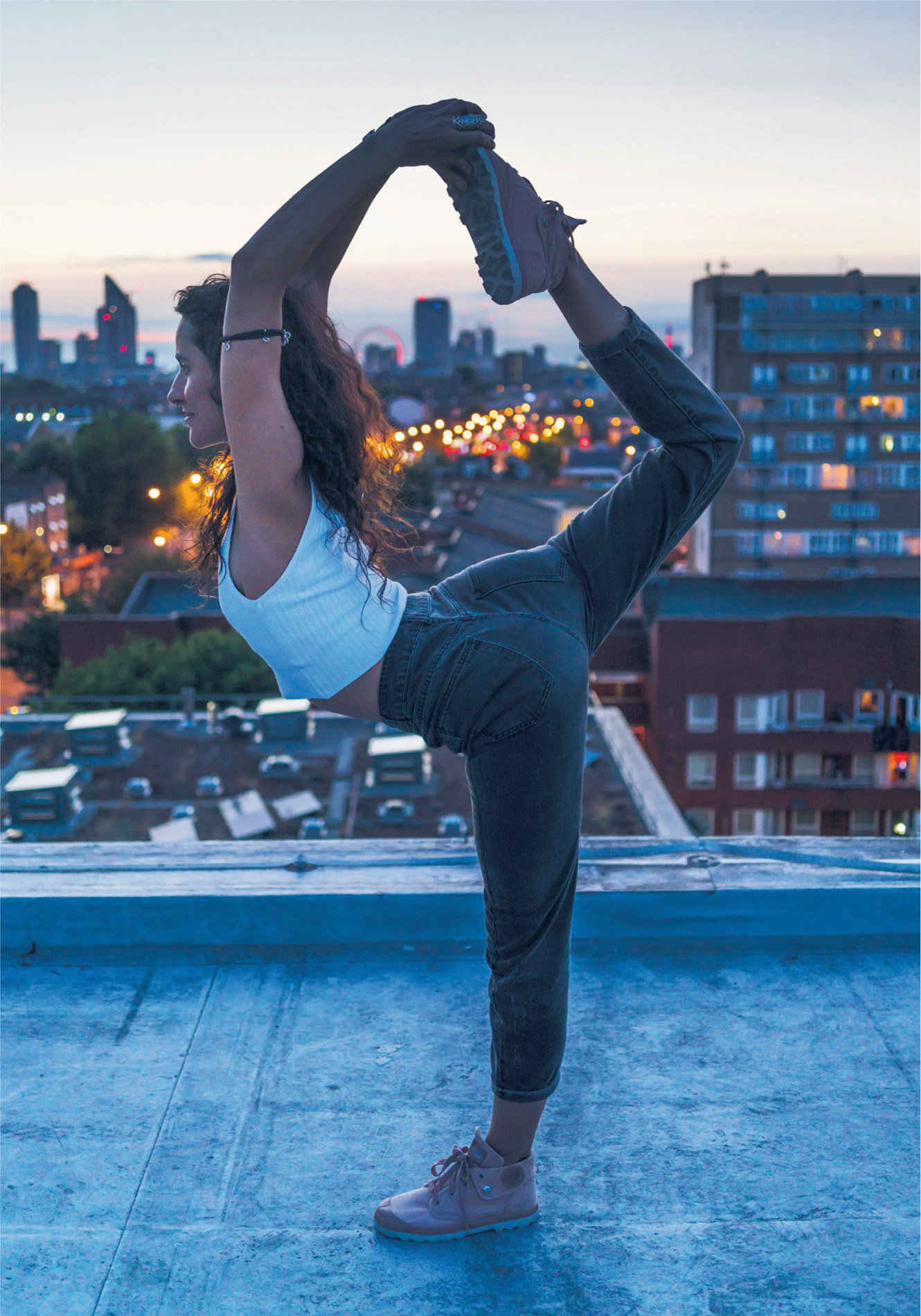
Introduction
Five years ago a few downward-facing Dogs, a standing tree and a seated meditation would have satisfied your average postural yoga class. Today it is becoming increasingly clear, both in class and online, that a lot of people wish to gain enlightenment through sticking their foot behind their head. Preferably in a handstand, ideally in the splits and then take a picture.
Whether enlightenment is achievable through a one-legged flying pigeon or not (and whether enlightenment even matters if you didnt take a picture), crowded yoga studios are not the ideal place to test out your funky moves without the risk of your foot landing behind somebody elses head.
Lucky for you, this book is here to demystify some big poses: the ways in, the ways out, tips, drills, costume suggestions and ideal photogenic backdrops. So you can learn to win at yoga publicly, from the safety of your own space.

WHAT YOU WILL NEED
Other than a certain level of strength, a compliant skeleton, and patience of mind, you dont really need anything at all. The joy of yoga is that no fancy equipment is required, no expensive tools and no special clothes. A yoga mat can be useful though is not essential, and any equipment we think could help get you in and out of poses is laid out at the start of each section, followed by a list of household item substitutions, so you can assemble your armoury before you begin.
HOW TO USE THIS BOOK
Each pose begins with an indication of whats required of you: elements of flexibility, strength and stability that are essential to perform the pose safely.
If you already know that your hamstrings are so noodle-like you can fold yourself through your own legs, or your shoulders are so tight you havent lifted your arms above your chest since 2005, then you can target which elements need more work right from the start. If you dont know, dont panic. Most people dont. Instead, work your way through the gateway poses, paying attention to which ones come easy and which ones prove something of a challenge. Your level of flexibility and strength will soon become apparent through your levels of sweat and your desire to swear loudly as you execute each one.
The gateway poses in each chapter are all designed to help you learn what needs a little work, as well as working towards the shape of the ultimate pose. Work through them in order, as often they will build on the one before.
Practise all of them regularly, but if one is especially difficult for you (and/or focusses on an area you know you need particular help with), then you can of course devote more of your time to it.
Your starting level of strength and flexibility will determine how long youll need to practise before you tackle the final pose, but as a general rule, try to get to the stage where you can comfortably hold each gateway pose for the required time before you move on.
If youre ever confused by any of our terminology, theres a glossary of weird yoga terms and metaphors on (so you can start bandying them about and confusing others with them too).
TIMESCALE
Many of these poses will take years of falling on your face, your nose and your houseplants before you master them, and whats more, how accessible each pose is to you will come down to your frame, your natural range of motion, and your current level of flexibility and strength. So be patient.
Practise as regularly as your schedule allows, keeping in mind that how frequently you work through the gateway poses and strengthening exercises will go a long way towards determining how soon the pose arrives, but also remembering that things like jobs, children, friendships and Netflix marathons are sometimes almost as important as handstands.
Try to accept defeat gracefully. If, after many months or years of working on your flexibility, youre still finding a particular full pose impossible to access, it may simply be that your bones arent going to let you in.
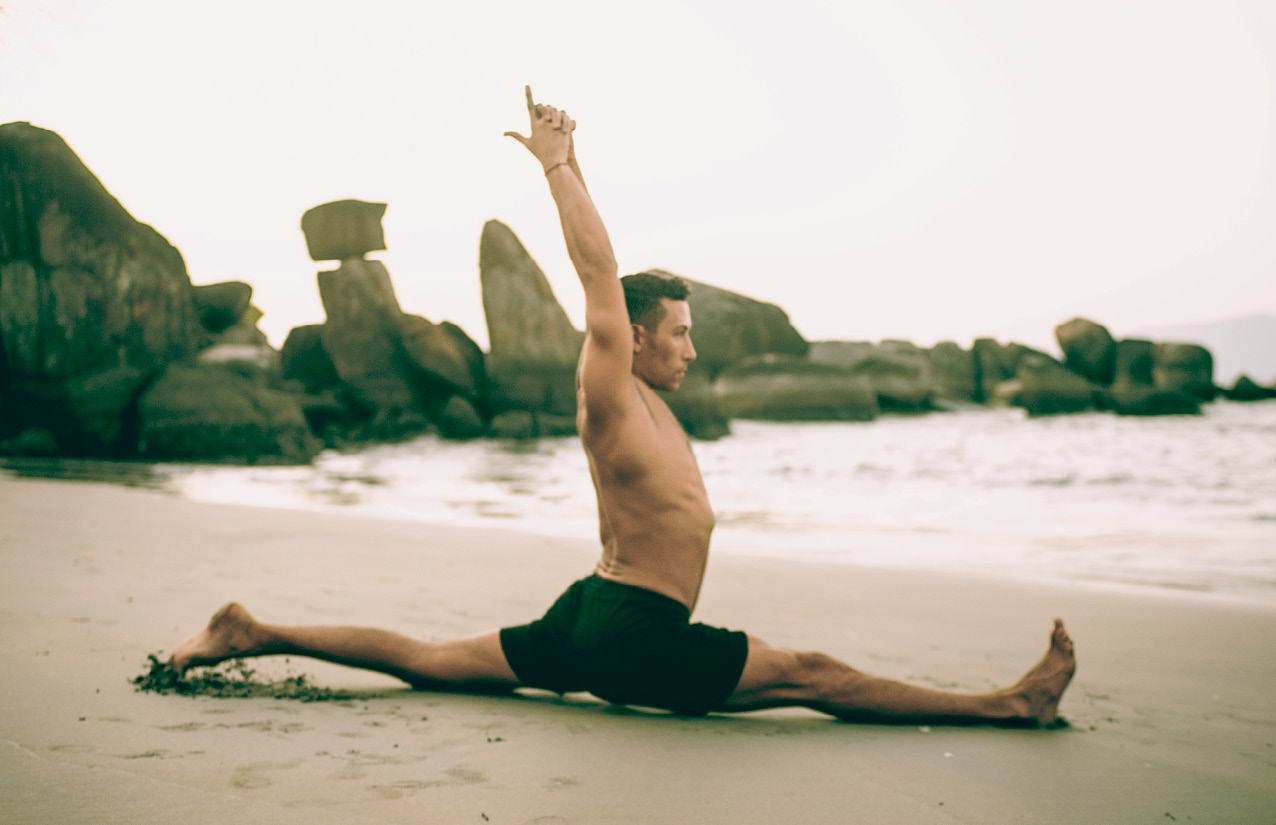
SAFETY
Yoga is not supposed to injure you. Listen to your body. Be kind and non-violent to yourself and to others, and never do anything that could hurt you, your housemates or your pets.
Although some of the stretching postures in this book will feel intense, the pain should never be sharp, so learn how to distinguish between stretchy pain and gone-too-far pain in your body. Be particularly careful around knees, hips, shoulders and the lower back, since these are areas often tweaked or pulled through over-zealous practice. Read our instructions carefully, and if you develop pain, or are working with an ongoing injury, always check in with a qualified body worker or physiotherapist to make sure you are OK to continue with these practices.
Next page
